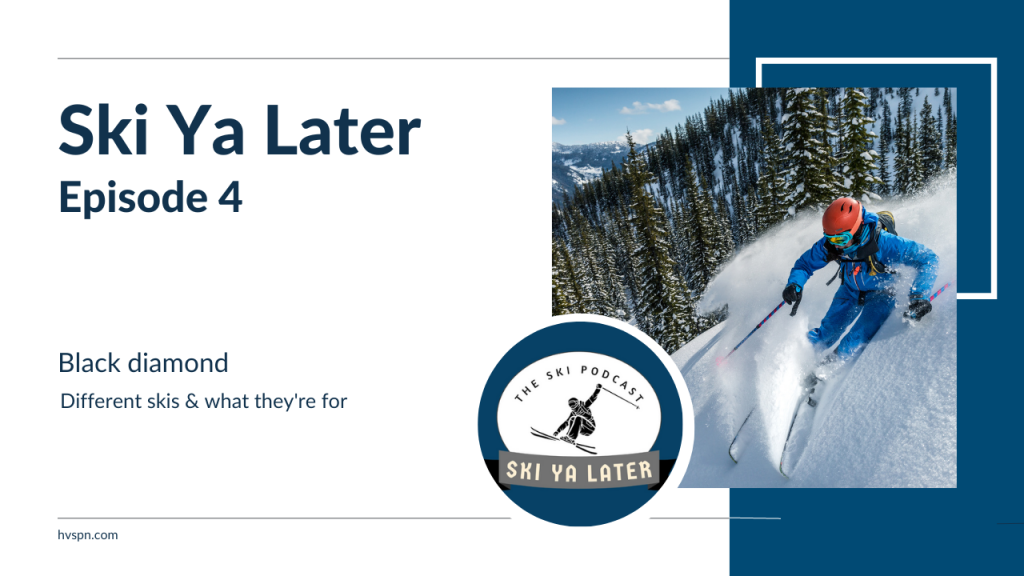Black Diamond

Hopewell Valley Student Podcasting Network
Ski ya later: Black Diamond
You are listening to ski ya later with your host(s) Liz.
In this episode of ski ya later the Podcast we discuss: different types of ski and what they’re used for.
Segment 1: Different types of skis
All mountain skis
- all terrain skis.
- Most basic
- most popular
- Medium width
- Usually have a rockered tip
- directional skis designed to work in a wide range of snow conditions.
- Work best on groomed snow
- Dimensions vary depending on the model (usually from 85mm to 105mm)
- Tips are usually wider, tails smaller
- Turn radius between 15mm to 22mm
Cross Country skis
- Much narrower and lighter
- Specifically designed to travel on flat terrain which is the biggest difference
- Two broad categories (classic and skate)
- Classic are moving with extending one foot in front of the other, as skate with a skating motion
- In 2022 fischer was voted best for XC skis
Race skis
- Arwent lightweight skis ( the weight of the ski helps to dig into snow when carving)
- The are fully cambered skis (don’t float on powder well)
- Narrow waist
- And designed to hold an edge
- Stiffer flex pattern to be able to hold turns at a significantly faster speed
- Radius is around 12 to 13 mm
- Pricey
Powder skis
- Created to float and be stable in deep powdered snow
- This allows the skier to ski on the surface of the snow
- Significantly wider
- Big tips
- Either fully rockered or at least have a rockered tip
Park skis (twin tips)
- These skis are made to ski backward and forward
- They are created to do well on boxes, rails, jumps and as well as spin well
- The tip is identical as the tail
- The bindings are set directly in the middle of the ski. Like a helicopter
Rocker and Camber
- Camber is for firm snow, holding an edge
- A camber concaves the ski in relation to the ground
- A rocker is an inverse camber
- A rocker helps the ski float, like water skis
- It would look convex from the ground
- Most skis nowadays incorporate both into the ski
- The combo is called rocker camber profile
Camber puts springiness and pop into a ski. It permits easy handling, responsive turning, powerful carving, stability and, due to ample edge contact with the snow, good grip on icy slopes. It remains a popular choice when skiing groomed slopes or on hardpack snow.

